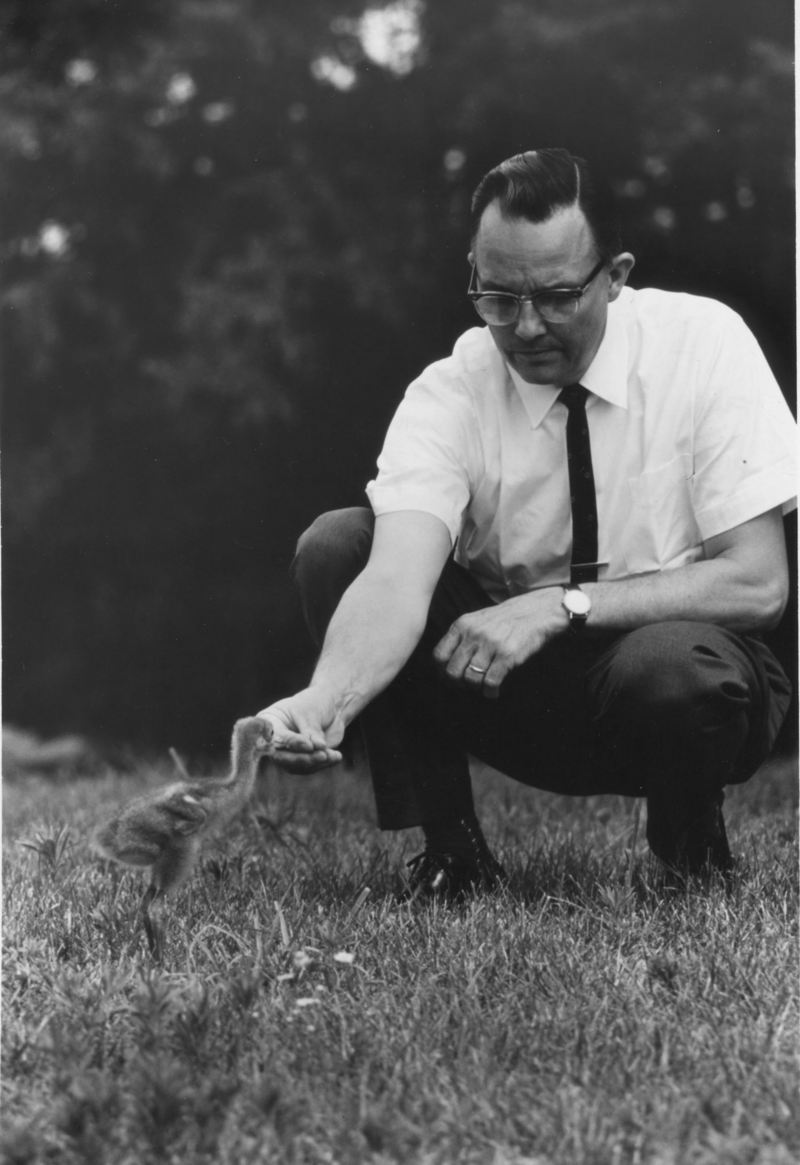From the U.S. Fish and Wildlife Service's online digital media library.
Check http://images.fws.gov/ for higher quality version.
Metadata
Title: Feeding Whooping Crane Chick at Patuxent Research Refuge
Alternative Title: (none)
Creator: Schmidt, Rex Gary
Source: WV-31-Refuge Historic
Publisher: U.S. Fish and Wildlife Service
Contributor: NATIONAL CONSERVATION TRAINING CENTER-PUBLICATIONS AND TRAINING MATERIALS
Language: EN - ENGLISH
Rights: (public domain)
Audience: (general)
Subject: endangered species
refuge centennial
Maryland
Description
Abstract: Dr. Ray Charles Erickson (1918 - present) effectively merged the goals and mission of the National Wildlife Refuge System with the new priority of conserving endangered species, in the process giving the refuge system several of its most enduring wildlife symbols. Born in Minnesota, Erickson joined the Bureau of Biological Survey in 1939, later studying the stomach contents of raptors as a biologist at the Patuxent Wildlife Research Center in Maryland, and moving to Malheur National Wildlife Refuge in Oregon as a wildlife management biologist. But it was in the 1960's that Erickson emerged as a pioneer in the new science of endangered species breeding and reintroduction. Sparked by his exposure to trumpeter swan transplants between Red Rock Lakes National Wildlife Refuge and Malheur, Erickson’s attention turned to the rare whooping crane, a stately white bird whose numbers had plummeted on a single Federal refuge on the Texas Gulf Coast. He advocated the use of the more common sandhill crane as a surrogate for captive propagation; using $2,000 from refuge chief J. Clark Salyer II, Erickson employed Monte Vista National Wildlife Refuge in Colorado as the test site for removal of sandhill crane eggs from the wild and hatching in the safer environment of captivity. His eventual success buoyed Erickson’s conviction that the precarious whooping crane flock could be bolstered by this scientific intervention, which was later attempted with world attention and acclaim at Patuxent. Other imperiled species, including the masked bobwhite quail and the California condor, were beneficiaries of these techniques involving surrogate species and captive propagation, and relied on national wildlife refuges as various locations for their return to the wild. “It felt like one heart attack after another,” said Erickson of some early, unsuccessful efforts. “We were operating on a shoestring with very little to guide us except literature on other species. This sort of challenge demanded innovative ideas and good teamwork adapting the known to the unknown.” Here, Erickson feeds a whooping crane chick at Patuxent.
Date
Available: November 21 2002
Issued: November 21 2002
Modified: May 10 2004 |

